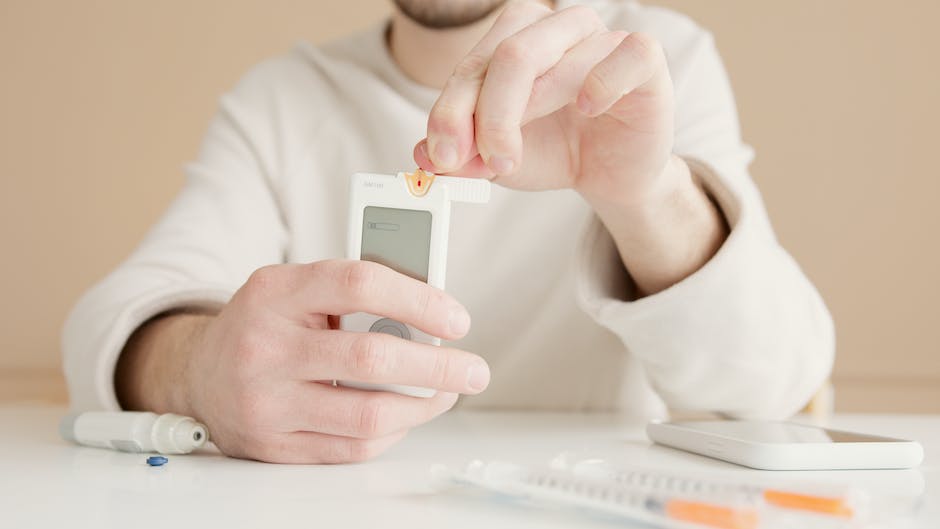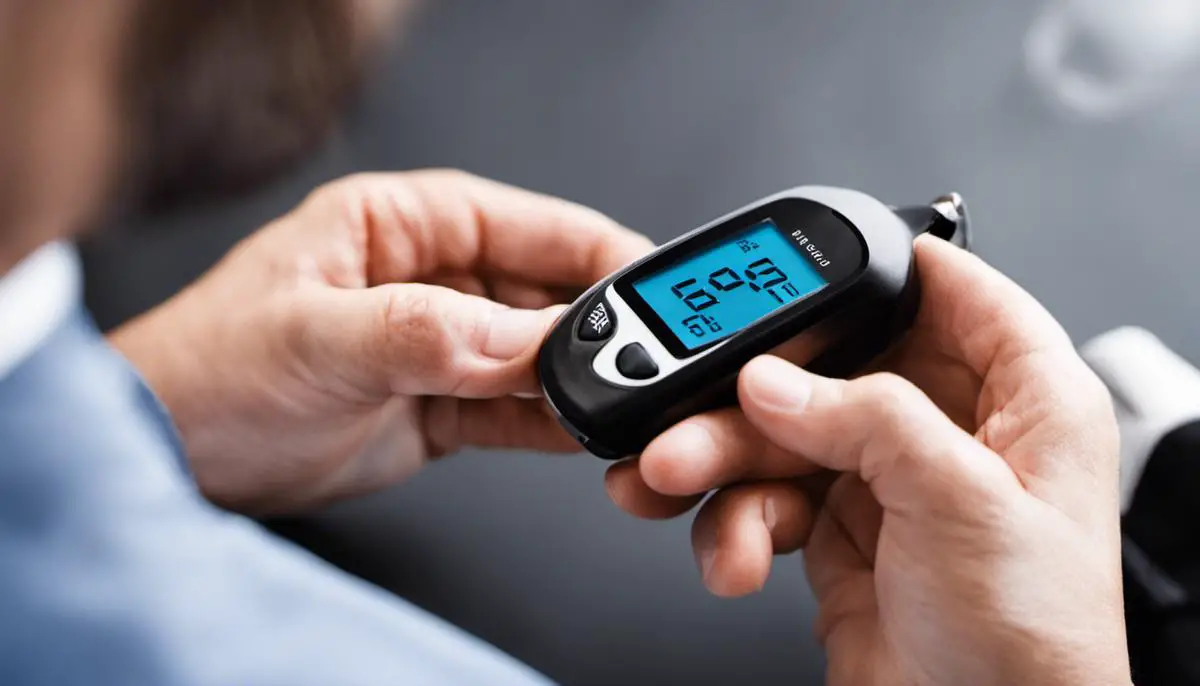Diabetic Ketoacidosis, often referred to as DKA, is a severe and potentially life-threatening condition that primarily affects individuals with diabetes. This medical emergency can be avoided with a good understanding of its underlying causes, early detection, proactive management strategies, and appropriate lifestyle choices. Diabetes, a chronic disease marked by high blood sugar levels, facilitates DKA when insulin is insufficient or ineffective, requiring an urgent understanding on the role of insulin and consistent blood glucose monitoring. Additionally, evaluating daily life habits from diet, exercise, sleep patterns, and handling of illness and stress efficiently, contribute significantly in warding off the onset of DKA. Recognizing the significance of an emergency plan plays an equally valuable part in ensuring a timely response to DKA symptoms.
Understanding Diabetic Ketoacidosis (DKA)
Understanding Diabetic Ketoacidosis (DKA)
Diabetic Ketoacidosis (DKA) is a serious complication of diabetes, a metabolic disorder in which the body is unable to use glucose for energy due to insufficiency or non-functioning of insulin. When this happens, the body starts to break down fat as a fuel source which, as a byproduct, produces a large amount of ketones. Ketones are acidic, and when their concentration in the blood becomes too high, it can lead to DKA, which can cause major organ failure and even prove fatal.
Contributing Biological Factors
Several biological factors, like insulin insufficiency or resistance, trigger the breakdown of fats leading to DKA. In Type 1 Diabetes, the body’s immune system destroys the insulin-making cells in the pancreas. Without enough insulin, glucose builds up in the bloodstream instead of moving into the cells. The cells, starved for energy, break down fat, producing an excess of ketones. This leads to DKA.
People with Type 2 Diabetes can also develop DKA, mostly in the presence of severe illness. Infections, heart attacks, and strokes can spur insulin resistance, pushing the body to burn fats and produce ketones.
High-Risk Groups
While everyone with diabetes is potentially at risk of DKA, certain groups are more susceptible. These include children and adolescents with Type 1 Diabetes, individuals who are sick with infections or other illnesses, pregnant women with pre-existing diabetes, as well as those who skip or do not take enough insulin.
Symptoms of DKA and Its Importance
The symptoms of DKA are often the same as high blood sugar – extreme thirst, frequent urination, and fatigue. However, when ketone levels rise, symptoms like nausea, a fruity breath odor, and severe abdominal pain may occur. If left unchecked, DKA can cause coma and death and is hence considered a medical emergency.
Health Complications Associated
DKA can result in significant health complications like cerebral edema (swelling in the brain), acute kidney injury, or diabetic coma. Heart attacks and strokes are also potential outcomes of long-term, poorly managed diabetes and DKA, as raised glucose levels damage the blood vessels over time.
Understanding DKA and Its Prevention
The key to DKA prevention is active management of factors that contribute to its onset. These include regular measurement of blood glucose levels, adherence to prescribed medication and insulin routines, and maintaining a balanced diet to avoid glucose level imbalances. By scheduling regular medical check-ups, early signs of DKA can be spotted and addressed promptly. Effective prevention of DKA supports the health of individuals with diabetes and mitigates the chance of encountering severe complications.

Photo by birminghammuseumstrust on Unsplash
Role of Insulin and Blood Glucose Monitoring in DKA Prevention
How Insulin Contributes to Managing Glucose
The hormone insulin, which your pancreas produces, has a vital role in managing glucose within your body. Its primary job is to enable cells to absorb glucose, which they require for energy. When you eat, your food is converted into glucose which then enters your bloodstream. Once your glucose levels increase due to food intake, your pancreas releases insulin. The insulin binds to your cells and prompts them to soak up the glucose, thus managing your body’s glucose levels.
Insulin Deficiency or Inefficacy and DKA
Insulin deficiency or inefficacy can prompt DKA, a severe, potentially life-threatening complication of diabetes. When the body lacks enough insulin, cells cannot utilise glucose in the blood for energy. Instead, the body starts breaking down fat for fuel. This process results in the buildup of acids called ketones in the bloodstream, leading to DKA.
Symptoms of DKA might include frequent urination, excessive thirst, fatigue, confusion, and fruity-scented breath. Untreated, DKA can lead to serious health issues such as diabetic coma or even death.
Managing Insulin Requirement in DKA Prevention
Managing insulin requirement is crucial in preventing DKA. For individuals with type 1 diabetes, this might involve regular insulin injections or the use of an insulin pump. These treatments can provide a steady supply of insulin to the body.
However, insulin treatment needs to be personalized, considering factors such as diet, physical activity, and overall health. For example, more insulin might be needed during illness or stress, or if one is consuming more carbohydrates. Regular consultation with healthcare professionals is crucial in adjusting insulin doses according to individual needs.
Importance of Regular Blood Glucose Monitoring
Regular blood glucose monitoring is vital in preventing DKA. It helps to ensure that glucose levels in the blood remain within a target range set by the healthcare provider. By monitoring their blood glucose levels, individuals with diabetes can observe how their diet, physical activity, and medication affect their glucose levels.
Monitoring also allows for the timely identification of hyperglycemia, an essential step in preventing DKA. If levels are consistently high, that might signal a need to adjust medication dosage, dietary habits, or diabetes management plan.
Performing Blood Glucose Monitoring Correctly
Blood glucose monitoring is usually done with a small, portable machine called a blood glucose meter. A tiny drop of blood, generally obtained by pricking the finger, is placed on a disposable test strip that the meter reads and uses to calculate the blood glucose level.
It’s essential to perform the test correctly for accurate results. First, ensure that the hands are clean and dry. The side of the fingertip is usually the best spot to get a drop of blood, as it’s less likely to be sensitive. Apply the blood to the test strip, then wait for the meter to provide a reading.
Physicians generally recommend testing multiple times a day, usually before meals and at bedtime. Again, follow the personalized plan provided by the healthcare provider.
Key Roles of Insulin and Regular Blood Glucose Monitoring in DKA Prevention
DKA prevention significantly hinges on the efficient management of insulin requirements and the accurate, consistent monitoring of one’s blood glucose levels. By performing these tasks diligently, one can greatly diminish the likelihood of DKA development.

Life Habits to Prevent DKA
Knowing More about DKA
Diabetic Ketoacidosis, or DKA, is a grave complication that can occur among individuals diagnosed with diabetes. It happens when the body, lacking insulin, begins to break down fat as a substitute energy source, consequently causing the production of toxic substances known as ketones. If not properly controlled, this process can lead to DKA.
Balanced Diet and DKA Prevention
Maintaining a healthy, balanced diet is a key aspect of preventing DKA. This involves eating a variety of foods from all food groups in the right proportions to achieve and sustain a healthy body weight. Reduce intake of sugary drinks and high-fat foods. Focus on lean proteins, whole grains, and plenty of fresh fruits and vegetables which can better regulate blood sugar levels.
Importance of Regular Exercise
Physical activity can also play a significant role in DKA prevention. Regular aerobic exercise and resistance training can significantly improve blood glucose control, reduce cardiovascular risk factors, contribute to weight loss, and improve well-being. Aim for at least 150 minutes of moderate-intensity exercise per week.
Alcohol Moderation
Moderating alcohol consumption is also crucial to prevent DKA. Excessive alcohol can disrupt blood sugar levels, putting you at risk for DKA. Stick to the recommended guidelines for alcohol consumption and seek professional assistance if you are struggling with alcohol dependency.
Regular Sleep Patterns
Maintaining regular sleep patterns can help your body to regulate hormones and processes that impact blood sugar control. Lack of sleep can affect the body’s insulin sensitivity and lead to increased blood glucose levels. It is recommended to aim for seven to nine hours of sleep each night.
Regular Physician Check-ups
Regular check-ups with your physician play a critical role in preventing DKA. Your doctor can help monitor your blood glucose levels and adjust your diabetes management plan as needed. It’s also the best way to catch any potential complications early before they become a major issue.
Maintaining a Healthy Weight
Maintaining a healthy weight is essential in preventing DKA as well as managing your diabetes. Being overweight can make it harder for your body to use insulin properly and increase your risk for DKA. Adopting healthy eating habits and regular physical activity can help you achieve and maintain a healthy weight.
Stress Management
High stress levels can negatively impact your blood sugar levels and increase your risk of DKA. Incorporating stress-reducing activities into your daily routine such as mindfulness, meditation, and yoga can help keep your glucose levels in check.
Medication Adherence
Sticking to any prescribed medication routine is vital in DKA prevention. Missed or incorrect dosages can lead to a spike or drop in blood sugar levels. Make sure to take your medications exactly as prescribed and reach out to your health care provider with any concerns.
Preventing DKA involves adopting a holistic lifestyle which primarily focuses on maintaining a well-balanced diet, engaging in regular exercise, ensuring adequate sleep, limiting alcohol intake, having routine check-ups with your physician, achieving and maintaining a healthy weight, managing stress effectively, and adhering to prescribed diabetic medication routines.

Handling Illness and Stress to Prevent DKA
Evaluating the Relationship between Illness, Stress and Blood Sugar Fluctuations
Both illness and stress can cause notable changes in blood sugar levels, as these conditions trigger the body’s response to generate a hormonal surge resulting in elevated glucose level. Physiologically, this increase in blood sugar supplies the necessary boost of energy during challenging scenarios. However, individuals with diabetes — characterized by either a deficiency in insulin (as in Type 1 diabetes) or insulin resistance (as in Type 2 diabetes) — find it hard to effectively process this surplus glucose. This consequently leads to an unwarranted increase in blood sugar levels.
Sick Day Rules for People with Diabetes
Sick days can be particularly challenging for people with diabetes, as illness increases the body’s insulin demand and can disrupt food intake and medications. Regular blood sugar monitoring, every two to four hours, is crucial during these times to maintain blood glucose levels within the target range. It’s equally important to continue taking your diabetes medications, unless recommended otherwise by your healthcare team.
Keeping yourself hydrated and consuming a regular diet is also essential. If faced with a situation where eating regular meals might not be possible, liquid or soft foods can be a suitable substitute.
Stress Management and Diabetes
Chronic stress can contribute to persistently high blood sugar levels. Practices such as mindfulness, yoga, regular physical activity, and adequate sleep can assist in stress reduction. Moreover, learning calm and effective problem-solving methods can also help manage stressful situations without causing significant disruptions to blood sugar levels.
Importance of Healthcare Team Consultation
Your healthcare team plays a crucial role in guiding you through illness or periods of intense stress. It is important to contact them when blood glucose levels are frequently out of the target range or whenever you’re feeling unexpectedly unwell. They can provide individualized advice in relation to your medication dosage, diet, and overall diabetes management plan during those challenging times.
Recognizing DKA Symptoms and Seeking Medical Assistance
Diabetic Ketoacidosis (DKA) is a serious complication that might occur when the body starts breaking down fats for energy due to lack of insulin, resulting in an acidic environment in the blood. Common signs of DKA include excessive thirst, frequent urination, nausea or vomiting, abdominal pain, fatigue, and shortness of breath.
If you experience these symptoms, checking ketone levels in your blood or urine is crucial. Ketones are chemicals your body might make when your blood glucose levels are too high. Testing can be done at home using over-the-counter kits.
DKA can rapidly escalate and become life-threatening if not treated promptly. Early recognition of symptoms and immediate medical attention can prevent DKA complications. It’s always advisable to call your healthcare team or visit an Emergency Department if you suspect DKA. Having an emergency plan, discussed and agreed upon with your healthcare team, can be helpful in managing such situations.
Forefront on DKA Prevention
When it comes to DKA, prevention is your best defense. You can considerably curtail your risk of developing this health complication by maintaining optimal blood sugar levels, proactively managing diseases, mitigating stress, and liaising closely with your healthcare professionals.

Emergency Plans for DKA
Spotting DKA Symptoms
Diabetic ketoacidosis, commonly known as DKA, is a severe diabetic complication that could exacerbate to a diabetic coma or fatal if not promptly attended to. Thus, gaining an understanding of DKA symptoms, which are usually conspicuous by elevated blood sugar levels, is crucial for averting it. Be vigilant for signs such as sodden fatigue, insatiable thirst, frequent urination, disorientation, breathing difficulties, a fruity smell in your breath, and sudden weight loss.
Importance of an Emergency Plan
Having an emergency plan in place is essential for people vulnerable to DKA – notably, individuals with type 1 diabetes and, less commonly, type 2 diabetes. The plan, which should be prepared in consultation with a healthcare professional, will guide patients and caregivers on the immediate steps to take if DKA symptoms arise. This thorough plan might involve regularly monitoring blood sugar levels, adjusting insulin dosage, and taking preventative measures like maintaining a healthy diet and regular exercise.
Components of the Emergency Plan
A DKA emergency plan might include self-care steps like frequent insulin injections or an insulin pump, checking blood sugar frequently, monitoring levels of ketones (chemicals that indicate DKA) in urine or blood at home, maintaining hydration, and eating a balanced diet. This plan should be personalized according to an individual’s health profile, medication regimen, and lifestyle. Furthermore, immediate family members or caregivers should be familiarized with this emergency plan to assist in its execution as required.
When to Seek Immediate Medical Attention
While the emergency plan may effectively help manage DKA symptoms initially, it’s critical to know when it’s time to seek immediate medical help. If the DKA symptoms persist, cause discomfort, or if blood sugar levels remain high despite attempts to lower them, immediate medical attention is necessary. Furthermore, if home testing shows high levels of ketones, it’s crucial to promptly notify a healthcare provider.
Steps to Take Pending Medical Attention
While waiting for medical attention, several steps can be taken to mitigate DKA’s rapid progression. These may include hydration, taking insulin to reduce high blood sugar levels (as per advised dosages), or stopping the intake of food if blood or urine tests indicate high levels of ketones. It’s crucial to avoid delaying medical intervention while waiting for an ambulance, and instead prioritize reaching the hospital as soon as possible to prevent further complications.

Despite DKA being a potentially severe health complication, its prevention is a feasible task with informed, consistent, and conscientious management strategies. When given the essential understanding of the disease, one can guard against DKA through regular blood glucose testing, smart lifestyle changes, and proactive management of stress and sickness. At the core of DKA prevention lies an emergency plan that ensures optimum preparedness in case symptoms arise. The knowledge, vigilance, and readiness to confront DKA reduce not just the physical toll of such a condition, but the emotional and psychological stress it may cause too. Being proactive and informed empowers you in the face of DKA and reinforces the adage that prevention indeed, is better than cure.
